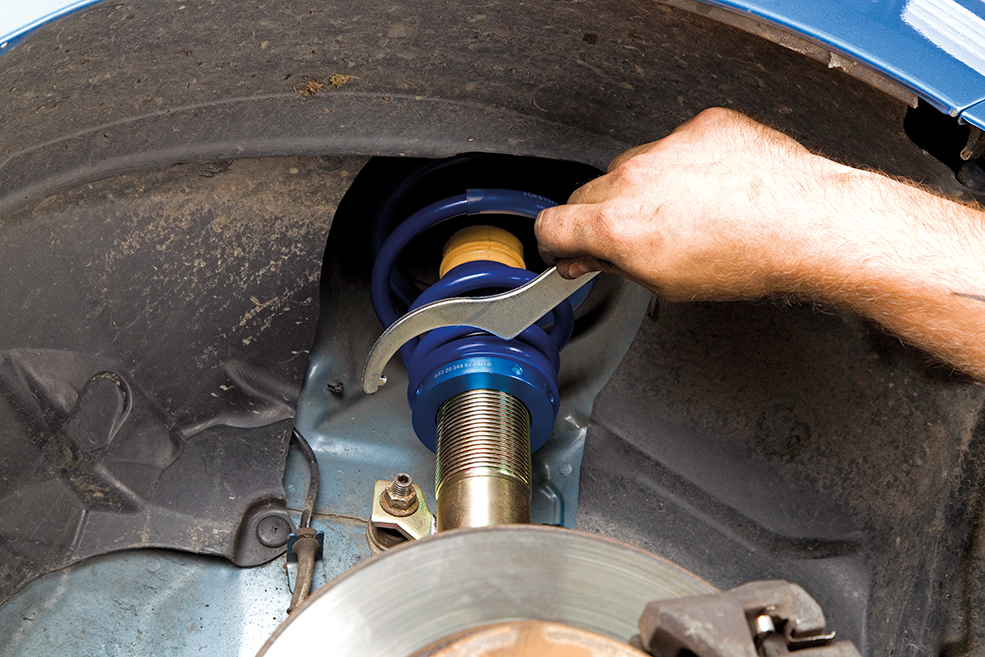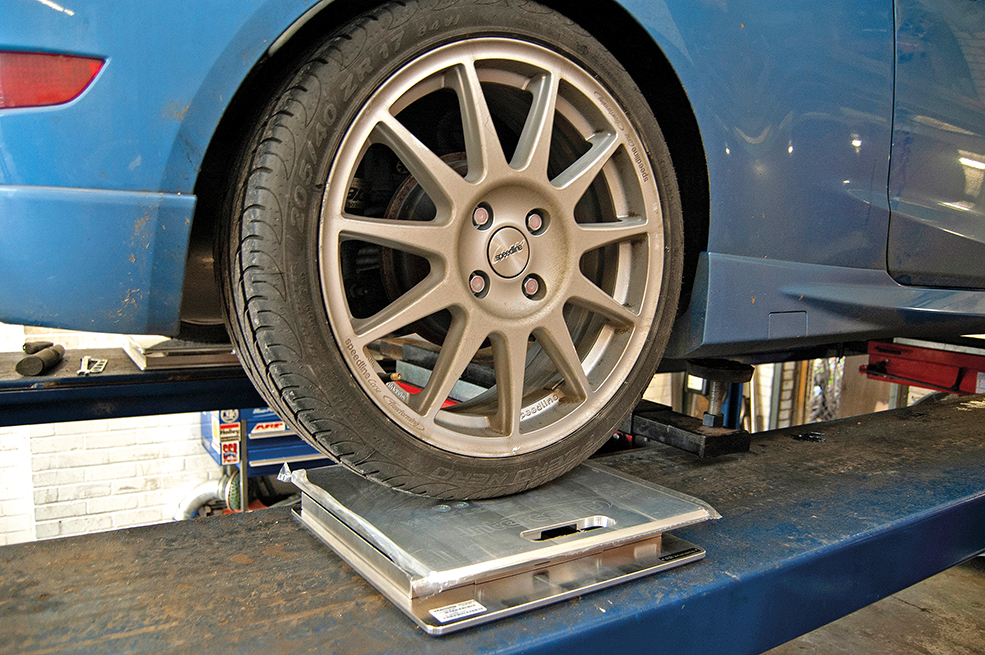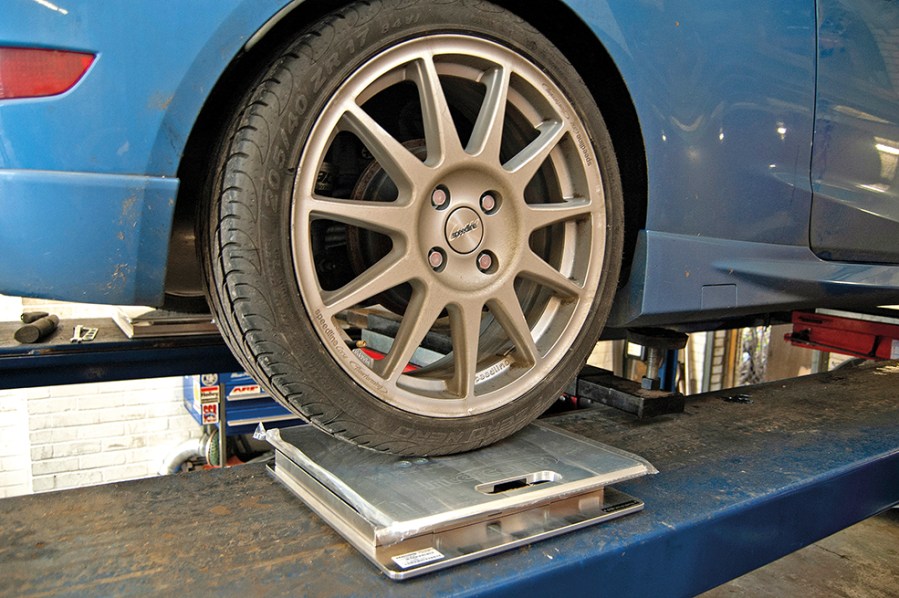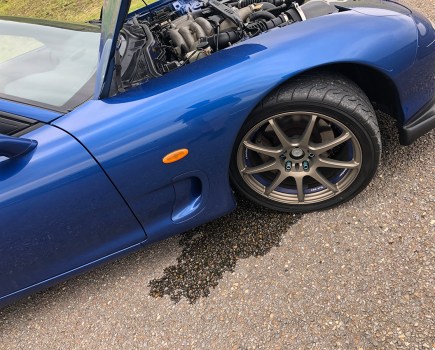Unlock optimal performance and handling with our comprehensive guide to corner weighting your car. Learn the techniques and benefits of precision weight distribution for superior driving dynamics.
One of the main reasons many people fit aftermarket car suspension is to have the ability to adjust the ride height. Simply lowering the ride height does have benefits, but height-adjustable coilovers also give you the ability to alter the way weight is balanced around the car.
Corner weighting, or corner balancing, is the process of equaling the weight distributed across all four wheels. Having the car weighted evenly can lead to substantial handling improvements, and is a brilliant way of maximizing the performance gains offered by aftermarket suspension.
Not only do you benefit from improved handling, but you also achieve more predictability when cornering. With the weight distributed evenly, you’re less likely to oversteer or understeer during cornering, allowing for a more natural grip slip off.

Adjusting coilovers does a lot more than just alter the ride height
Front to back corner weighting
For many applications you will look to achieve equal weight balance between the front and rear axles. In theory, this will lead to better balance between understeer and oversteer. In most road cars, especially front-wheel-drive models, that is not entirely feasible. The majority of the weight is over the front axle due to the engine and gearbox sitting forward of the front axle. But this can play to your advantage, given that the front axle does the steering and puts the power down too.
Managing this front-to-rear split will end up being a balancing act against your car’s front and rear roll stiffness, to achieve your target amount of understeer/oversteer to suit your driving style.
It’s a balancing act that is very personal to both the driver and the car, and you will need plenty of track time, along with lots of trial-and-error, to get it right.
Side to side corner weighting
This front-to-rear split is not the most important factor when corner weighting most cars. More importantly is the side-to-side balance of the car.
An offset side-to-side balance will result in a car that doesn’t corner evenly. Or, one that doesn’t corner as efficiently at is could because you’ve compromised the setup elsewhere to compensate for the imbalance.
From a driving point of view, a car that isn’t equal left-to-right is a car that is unpredictable and much more difficult to drive. As a result, you will struggle to get the most out of it on track. Not only that, but in a launch/start scenario (for race cars), a side-to-side imbalance can lead to the car not setting off in a straight line.
Cross weights
Most scale systems will give a ‘cross weight’ reading. This shows a percentage, representing the proportion of total vehicle weight on a cross-axle diagonal pair – for example, front-right and rear-left, or front-left and rear-right. The target here will always be to keep that cross weight at 50 per cent.
To measure corner weights, you’ll need a set of four scales, one to measure each wheel independently. Motorsport systems are available and usually have four pads connected to a control and display panel.
Before adjusting, it’s important to make the sure car doesn’t have an empty fuel tank or a boot full of junk.
Instead, imagine the car was just about to go out on track – fuel in the tank, driver strapped in the seat, and nothing extra floating around the cabin. It’s also a good idea to make sure the tire pressures are set at what you would be running, and any anti-roll bars should be disconnected to prevent the roll bar affecting the result.

A scale at each corner measures the effect of adjusting the coilovers
Weighing the car and adjusting the ride height
Roll the car onto the scales and allow the numbers to settle and take note of the output.
To reduce the weight on a wheel, lower the ride height on that corner by winding the spring seat down. This is the part of the process that most frequently confuses people, and at first glance it does feel counter-intuitive, as the car will lean more in that direction.
But what you need to remember is that lowering the spring seat is actually decreasing the preload on the spring and shortening the spring and damper assembly.
Conversely, to increase the wheel load you do the opposite and wind the spring seat up. Be wary of adjusting one spring seat too far, though. Make small incremental adjustments and try to balance the adjustment across the cross-axle.
For example, if the rear-left is too light, don’t just wind that coilover up until you see the numbers you want on the scales. Instead, a combination of increasing the rear-left and lowering the front-right will distribute the weight more evenly without having (as many) adverse effects elsewhere.
Adjusting the car’s center of mass
When it comes to handling there’s always a knock-on effect elsewhere, and it’s a balancing act to find the optimal setup. The same is true with corner weighting; adjust the coilovers so there is too much disparity between them, and not only will you ruin the ride height settings, but it could also result in some very unusual and unexpected geometries in the rest of the suspension, which will also cause your wheel alignment to be way out.
If you find you can’t get to the split you want without having to adjust things so far that the ride starts to become affected, try moving some mass around in the car. For example, things like relocating the battery can often help with a car’s balance.
Corner weighting – back on the scales
Before putting the car back on the scales to check your improvements, it’s important to allow the ride height to settle.
Dropping the car back onto its wheels after having been up in the air can result in an artificially high ride height due to something called hysteresis and stiction (yes, that’s the actual engineering term) in the bushes and the joints.
This can usually be resolved just by driving the car up and down the street, over a few bumps, or even just by using your own body weight to bounce the suspension through a few loops to ensure that everything is back to the actual ride height.
At this stage, having adjustable-length drop-links for anti-roll bars would be an advantage. Unevenness in the suspension position can cause the roll bar to fight against all your hard work.
If you can, fit adjustable links and then adjust them so there is no preload in any direction at your static ride height (again, with driver in the car and so on). That will mean the roll bars are only working when you want them to.
Reconnecting the drop-links
Finally, once you have achieved your target front-to-rear split, and maintained the 50 per cent cross-axle weight (without adjusting the ride heights too far from your target), you can reconnect the drop-links and go and have some fun carving up those corners.
Getting to this point takes time and is not easy. Corner-weight scales can also be expensive, so it’s often better to let someone who knows the process well, and has experience in it, to have a go on your car the first-time round.
Once the car is in the right ballpark, though, don’t be afraid to make changes – you’ll be surprised the huge differences even small adjustments can make.







